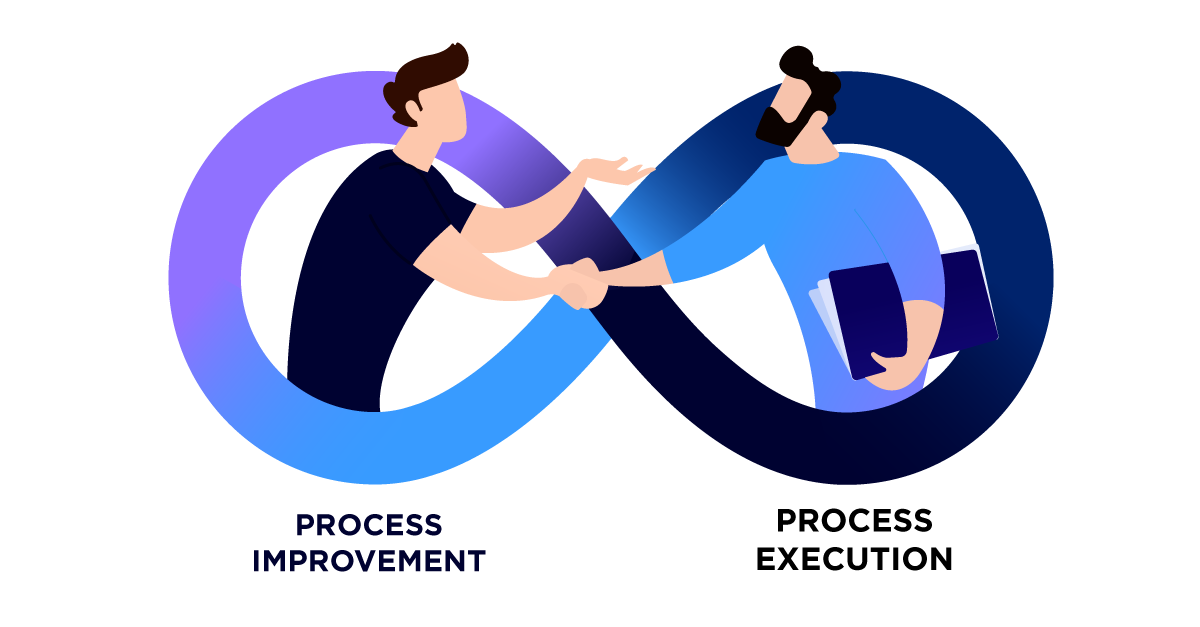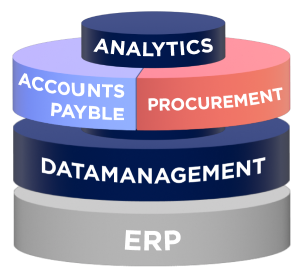3 min read
How Lean Six Sigma Helps Optimize Your Purchase-to-Pay Process
Editorial ICreative
Sep 12, 2023 8:45:00 AM

The purchase-to-pay process of corporate organizations comprises various strategic processes (such as sourcing or contract management) and operational processes (e.g. procurement and invoice processing). The p2p-process can be made more efficient through automation. However, before embarking on this journey, it is wise to first map out the processes to identify areas for improvement; otherwise, automation may not yield the desired results. The Lean Six Sigma method is well-suited for this purpose.
Two commonly used and proven methods for process optimization are Lean and Six Sigma. The Lean method focuses on identifying time waste in a process, locating the waste, and devising ways to reduce it. It involves identifying steps or actions in a process that do not add value for the end user and then streamlining and standardizing them.
On the other hand, the Six Sigma method involves measuring variations and deviations in a process and then striving to reduce these and optimize the process. This includes factors like lead times.
Though these methods can be applied independently, combining both leads to better results in process optimization. For example, in the invoice processing process, Lean can reveal that an invoice lingers for too long, possibly because the invoice processing software does not recognize the supplier. Six Sigma can then help pinpoint how long exactly the invoice remains pending. Six Sigma helps refine the problem more accurately, by conducting data analysis.
From problem to causes to solutions
The Lean Six Sigma method consists of five steps for systematically optimizing processes and continually improving them.
Step 1: Define
When an organization faces a complaint or fails to meet KPIs, it may discover a problem. But often, what seems to be the problem at first, is not actually the real issue. It is, therefore, crucial to accurately define the problem and describe how the process should ideally run. It is essential to inquire and understand the current process. It’s important that both the Lean Six Sigma consultant and your departments adhere to the same definitions to avoid misunderstandings.
Let’s take invoice processing as an example. Suppliers may complain that invoices take too long to process and are paid late consistently. However, this is not the actual problem but rather the result of something that happened in the purchase-to-pay process. Step 1 involves defining the problem and outlining the ideal situation, which is that invoices are paid within the stipulated timeframe.
Step 2: Measure
The next step is to determine how the process currently unfolds using data (what steps are taken, how much time is spent, where waste occurs). For this, you collect information and data related to the defined problem so that a reliable analysis can be conducted in the next step. Collaboration between the consultant and your organization is crucial in all five steps.
Data reveals what happened, but not why. Involving different departments provides a complete picture of the current process. In the example of invoice processing, the organization maps out how the process currently runs, investigating how often invoices remain pending for too long. The organization can also examine the lead times from receipt to payment and the variation in these times. Do invoices typically stay pending for an average of 5 days or 2 weeks?
Step 3: Analyze
In this phase, you analyze what emerged during the measurement phase, i.e., how the process currently unfolds. Suppose we label the process as Y (dependent variable) and its influencing factors as X (independent variables) from the define phase. In that case, we search for the X factors that affect Y. In the case of why invoices remain pending, the organization will explore actions taken and by whom, and study the data. It seeks to identify cause-effect relationships and identify any mediating and moderating factors at play.
For instance, is there manual work involved in processing the invoice, causing delays? Do invoices linger during the conversion from PDF to data file? Are employees involved who have nothing to do with the process? Is missing data preventing the invoice from progressing in the process? Is this an issue across the board or only with certain suppliers that send a high volume of invoices annually?
Step 4: Improve
Next, solutions are devised for the problem, and a decision is made on which solution is the best. This solution is then implemented, optimizing the process. In the example of invoice processing, it might be discovered that the invoice processing software fails to recognize supplier data during automatic invoice validation. Perhaps the data in the organization's ERP system is not up-to-date, or a company is listed multiple times. The solution would then involve addressing the data quality in the ERP system. Software provides insights into the problem, enabling the proposal and implementation of solutions.
Step 5: Control
The implementation is not the end point. Continuous improvement is crucial for processes to perform optimally, continually measuring for further improvements. Since there are always changes and deviations, there is no perfect process. Continuous improvement ensures these deviations are continually reduced. All previous steps are re-visited.
Knowledge partner for purchase-to-pay process optimization
By examining and continually optimizing the purchase-to-pay process, you work more efficiently, gain insights, and reduce manual work for your organization. It is advisable to engage a knowledge partner who is well-versed in Lean Six Sigma language and knows how to continuously improve purchase-to-pay processes in corporate organizations.
At ICreative we have a team of experienced and certified (Black Belt) Lean Six Sigma experts who are ready to support you throughout the process. Reach out to us today to embark on a journey of process optimization and continuous improvement. Together, we can transform your purchase-to-pay process into a well-oiled machine that drives success and growth for your organization. Contact us now to get started!









